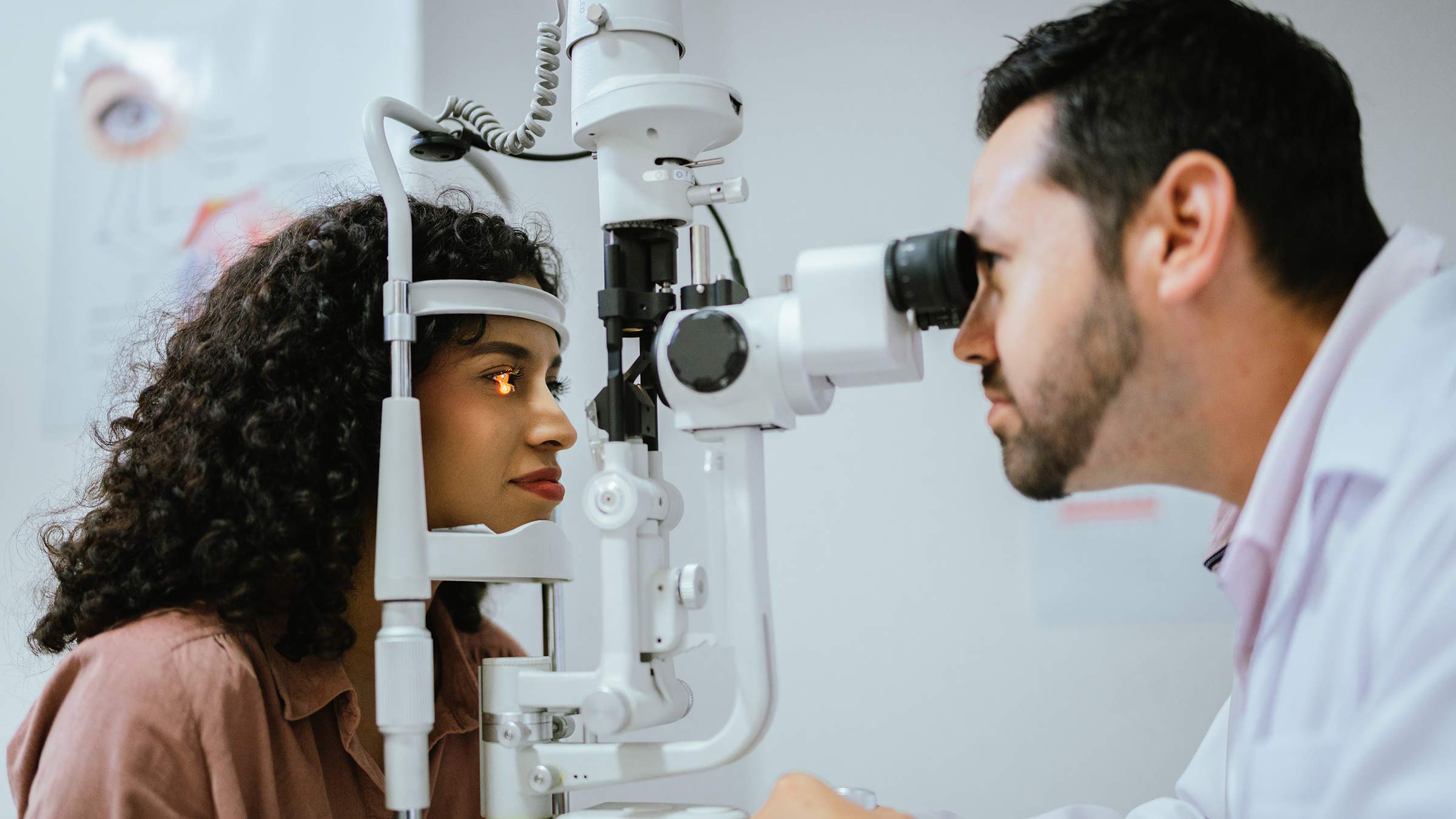
When you think of cataracts, you likely think of seniors in their 60s and 70s, or maybe even older.
However, people much younger, even in their 40s and early 50s, can have cataracts — and they could be advanced enough to affect their vision, making it harder to see at night, in bright light or in other conditions. While not nearly as common as cataracts among seniors, cataracts can start early.
At any age, the most common symptom of cataracts is blurred vision that new glasses or contacts often can’t fix.
Cataracts come with age as the lens in each of your eyes gradually turns from clear to cloudy. Some health conditions and habits can speed up that process.
Conditions that can lead to early cataracts:
- Diabetes comes with uncontrolled levels of blood sugar that can cause a chemical imbalance of the eye’s lens.
- Trauma to an eye or your head
- Steroids can change the clarity of proteins in the lens of your eye.
- Genetic malformations, including chromosomal abnormalities and inherited metabolic disorders
- Smoking releases harmful substances called free radicals into your body, which can damage the proteins in your eye lens.
- Extreme UV (ultraviolet) exposure without sunglasses
Changes in your eyes as you age
An eye’s lens not only becomes cloudier as you age, it also becomes stiff. From childhood to middle age, the lens of the eye changes from the consistency of silly putty to that of a marble.
When the lens is more stiff, it’s less able to focus light properly to see things at various distances, and particularly objects nearby. This explains why you need glasses as you age to see up close — a menu, a book, a text message.
How cataracts can change your vision
Since cataracts generally advance slowly over years, they can develop in your eyes without affecting your sight — at least at first. Eventually, you’ll have trouble seeing. You might see glare at night looking into the headlights of oncoming cars or hallows around streetlights, or you might be unable to see fine print.
The first sign your cataracts may be affecting your vision could be if you go for an eye exam and discover your vision is much worse in one or both eyes than it was a year or two ago.
No matter how much you change your prescription to help see better, you still have trouble in dim or bright light. A comprehensive eye exam can determine whether your trouble seeing is because of a change in the prescription of your glasses, a cataract or something else.
When to get cataract surgery
No supplement, eye drops or anti-glare sunglasses will reverse the cataract or keep it from getting worse. If your eyesight becomes poor enough to disrupt your daily life, the only solution is cataract surgery. In surgery, the cloudy lens is removed and replaced with a clear lens implant.
You might not need surgery until a cataract is significant.
There are four grades of cataracts, with grade 1 being the least serious and usually having no effect on your ability to see.
A grade 2 cataract can cause serious vision problems, depending on where the cataract is in your eye. Even small cloudy spots near your line of sight can have a big impact on how well you see.
A cataract’s size, location and density will determine when you need to have surgery.
Cataracts may not bother you for a while
How you use your eyes can affect when you need cataract surgery. If you’re retired and don’t have to drive much or only during the day, you might be able to go many years before needing surgery. But if you’re still working and your job requires you to closely examine detailed reports or spreadsheets, you may need surgery sooner rather than later.
The litmus test of whether you need surgery is when your vision is so compromised it’s keeping you from doing your daily activities. Typically, when people are unable to see well to read or drive, they consider surgery.
After cataract surgery, your new lens can include most of your prescription, so you might not need glasses anymore or as often.
How to protect your eyes
Whether or not you’re having trouble seeing because of cataracts, it’s important to wear UV protective sunglasses throughout your life, starting when you’re a child.
Sunglasses can cut down on your lifetime exposure to UV rays. The sunglasses you wear should protect you from UV rays up to 400 nanometers. A pair of sunglasses should say “UV400” or “100% UV Protection” on the label to get the most protection from UV rays.
Besides protecting your eyes from the sun, having an annual eye exam is key. That helps to ensure you’re wearing the clearest, most up-to-date prescription glasses that allow you to see your best.

Great vision starts here
Ohio State's optometry clinics provide world-class eye care for your entire family.
Schedule an appointment




